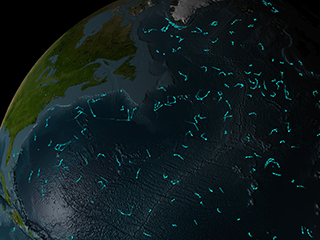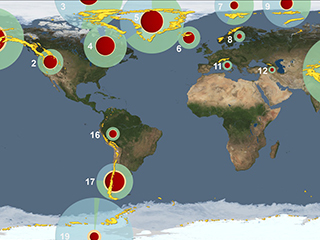Multimedia
Measuring elevation changes on the Greenland ice sheet
March 25, 2014
Since the late 1970s, NASA has been monitoring changes in the Greenland Ice Sheet. Recent analysis of seven years of surface elevation readings from NASA's ICESat satellite and four years of laser and and ice-penetrating radar data from NASA's airborne mission Operation IceBridge shows us how the surface elevation of the ice sheet has changed.
The colors shown on the surface of the ice sheet represent the accumulated change in elevation since 2003. The light yellow over the central region of the ice sheet indicates a slight thickening due to snow. This accumulation, along with the weight of the ice sheet, pushes ice toward the coast. Thinning near coastal regions, shown in green, blue and purple, has increased over time and now extends into the interior of the ice sheet where the bedrock topography permits. As a result, there has been an average loss of 300 cubic kilometers of ice per year between 2003 and 2012.
This animation portrays the changes occurring in the surface elevation of the ice sheet since 2003 in three drainage regions: the southeast, the northeast and the Jakobshavn regions. In each region, the time advances to show the accumulated change in elevation from 2003 through 2012.
This is the official release without the scrolling credits.
If needed, a complete transcript is available.






